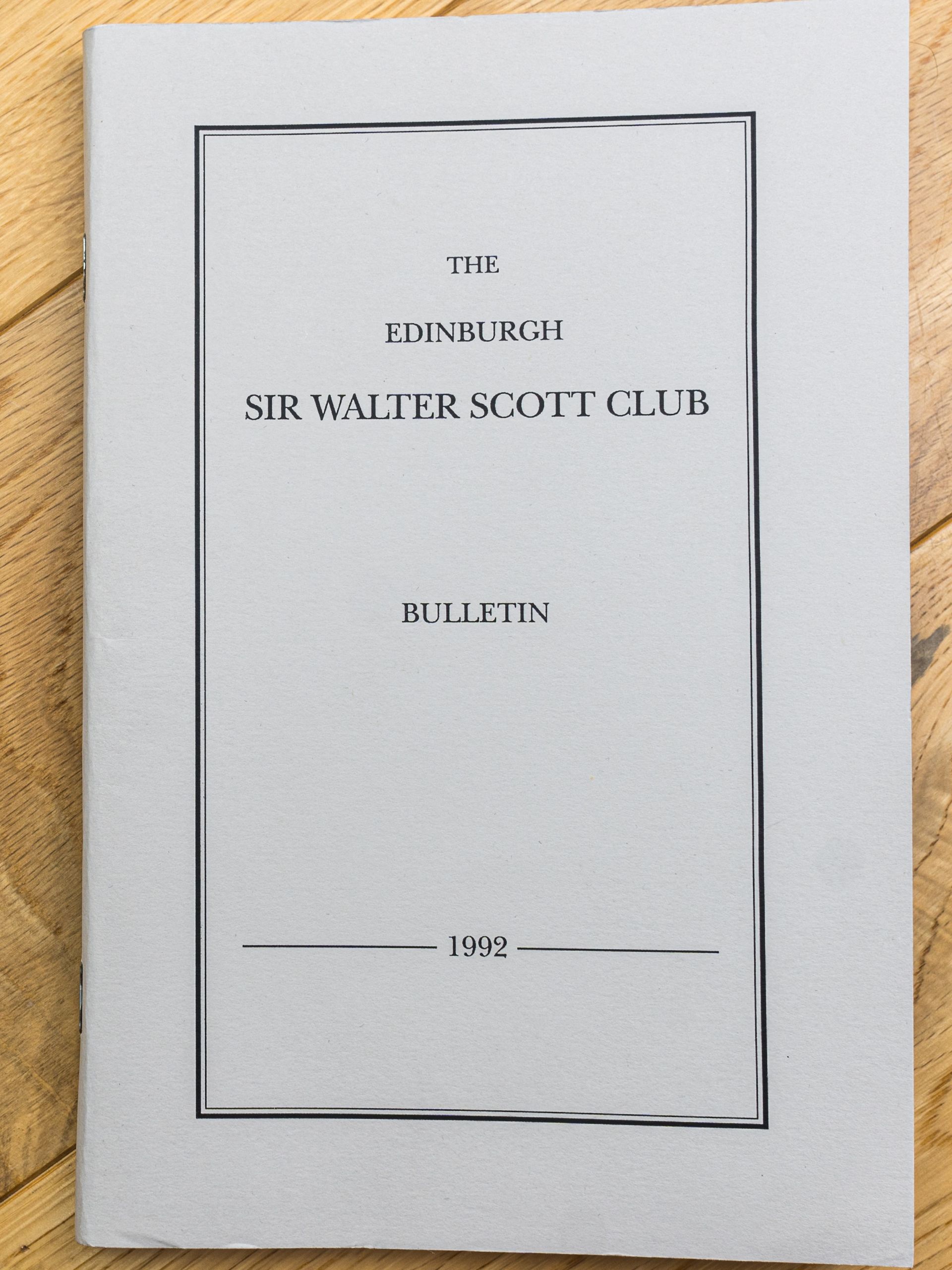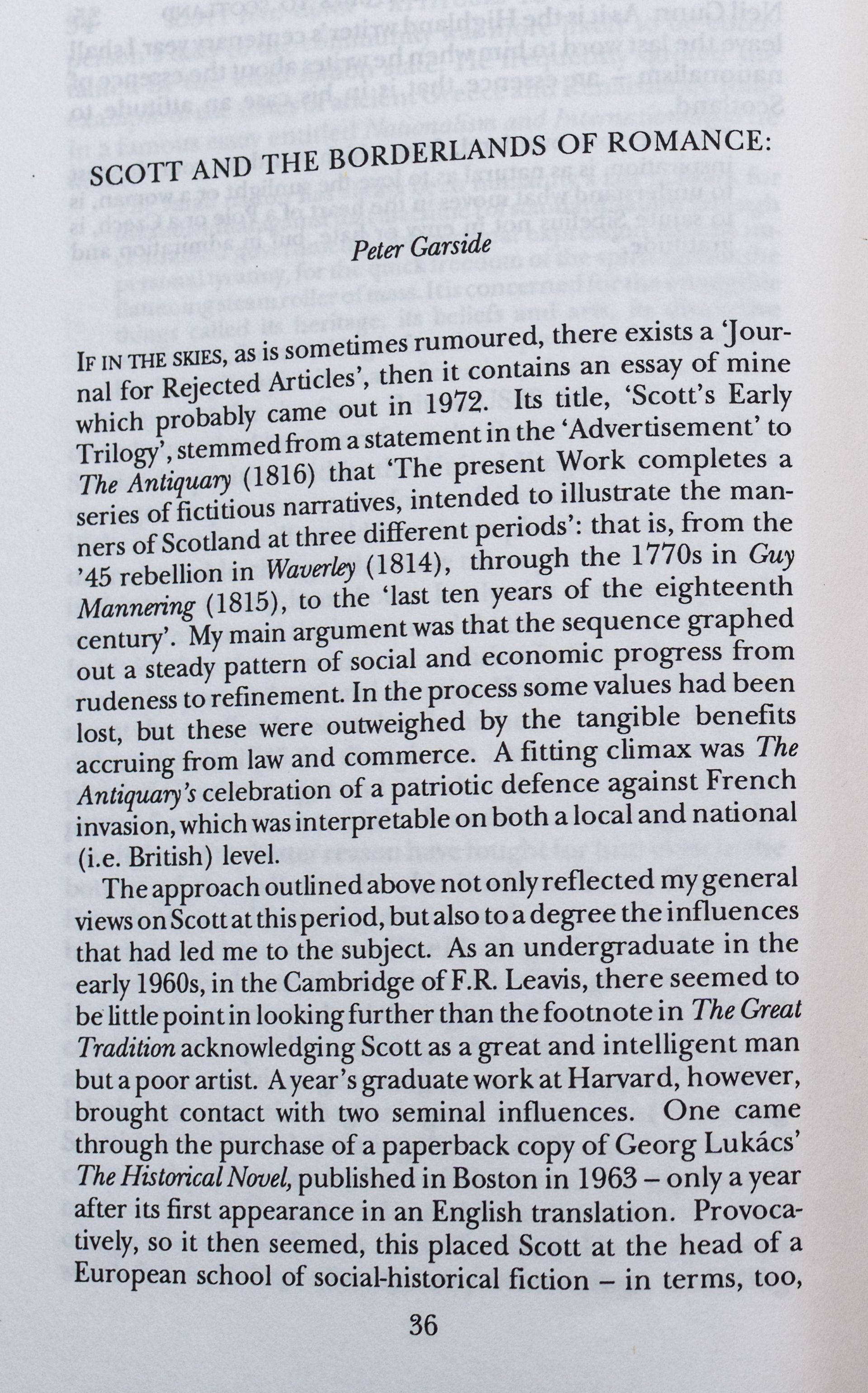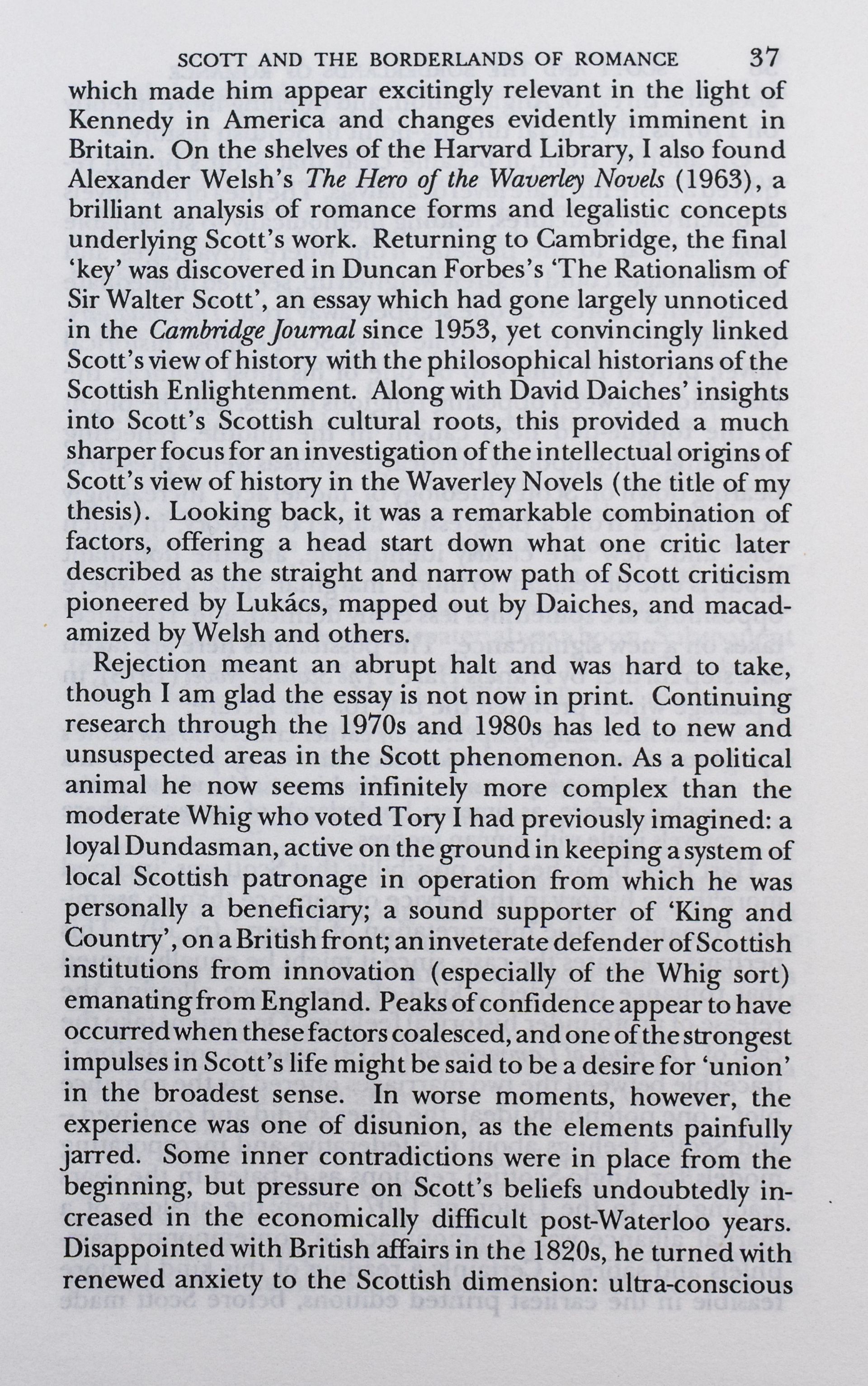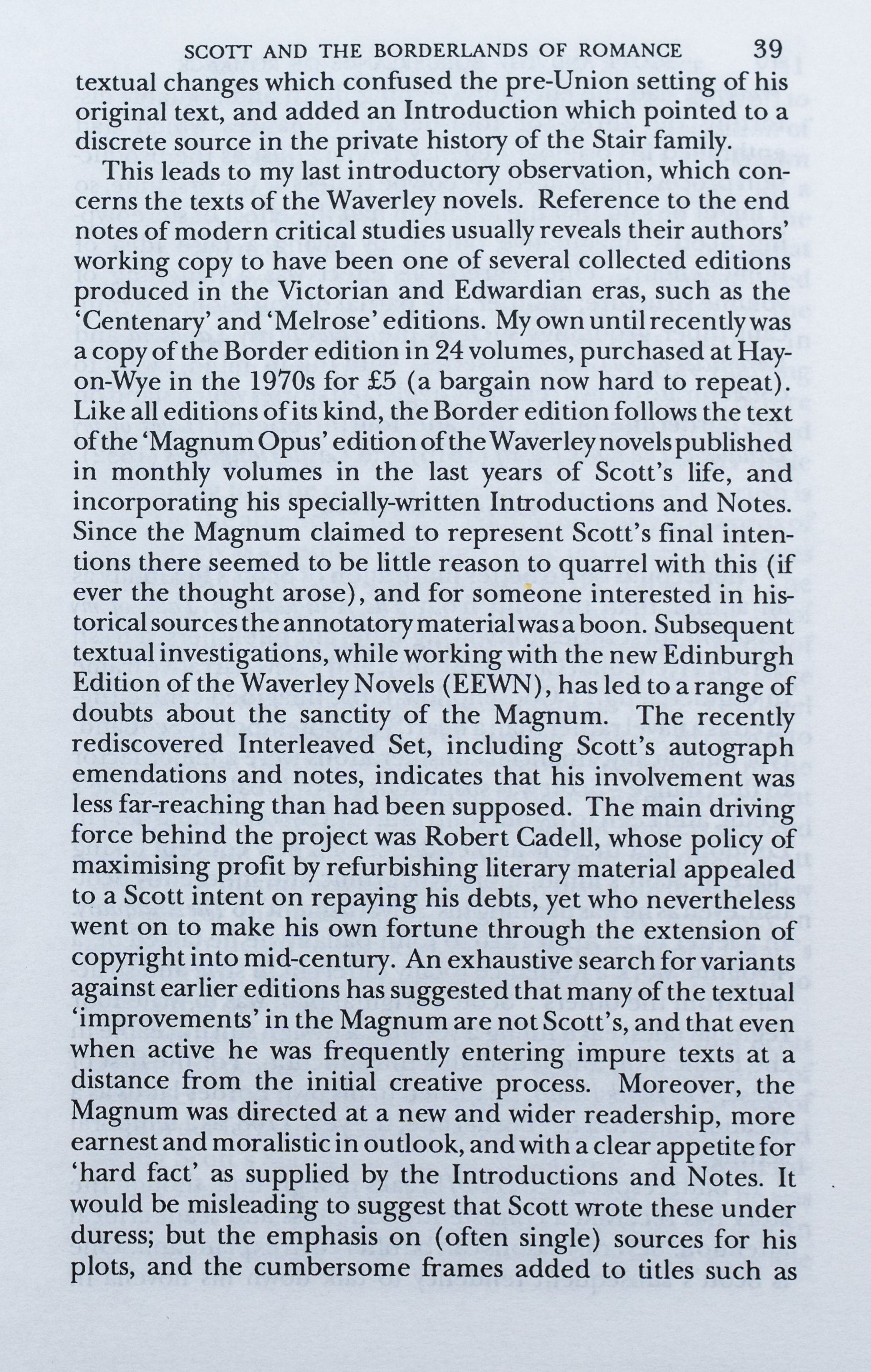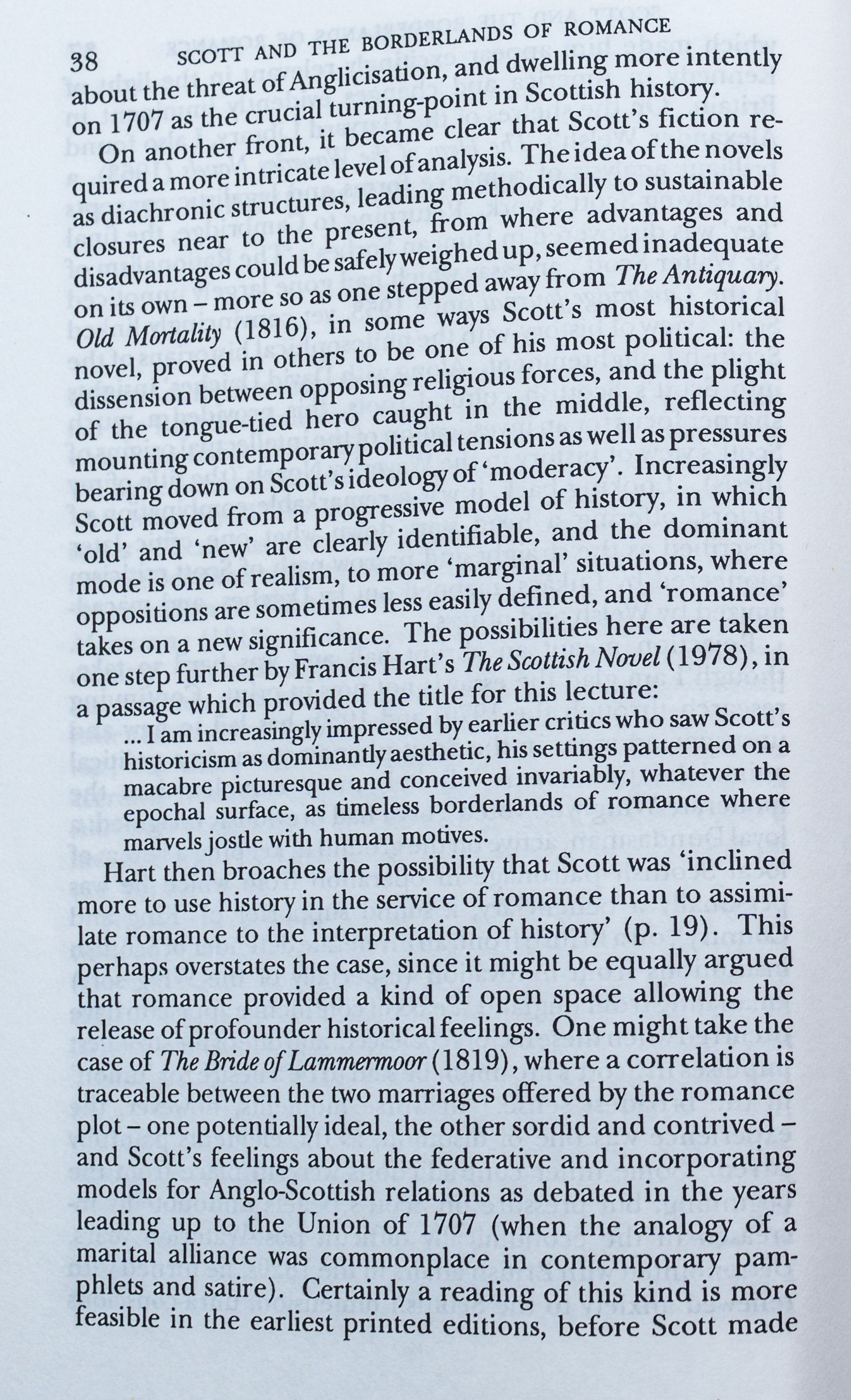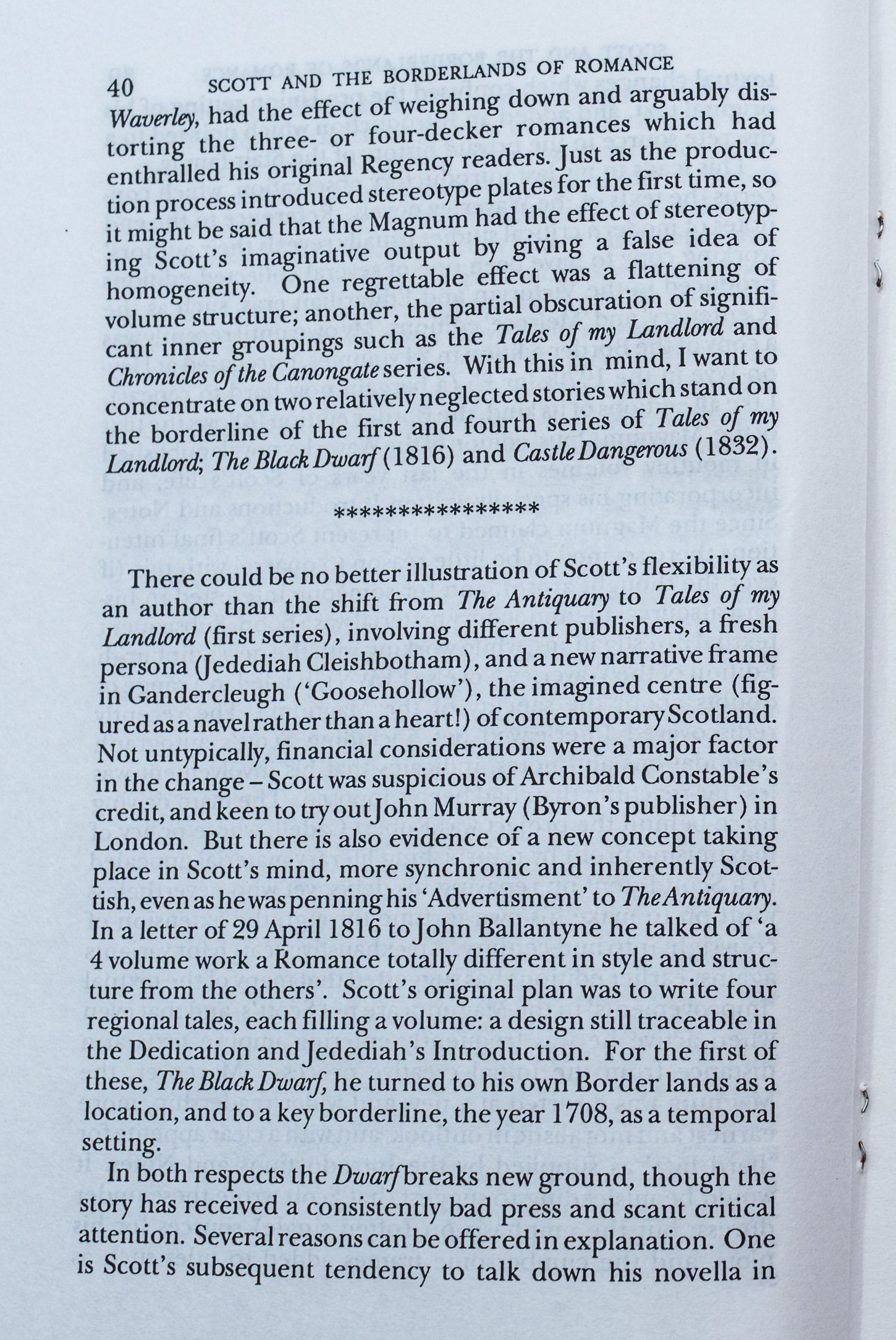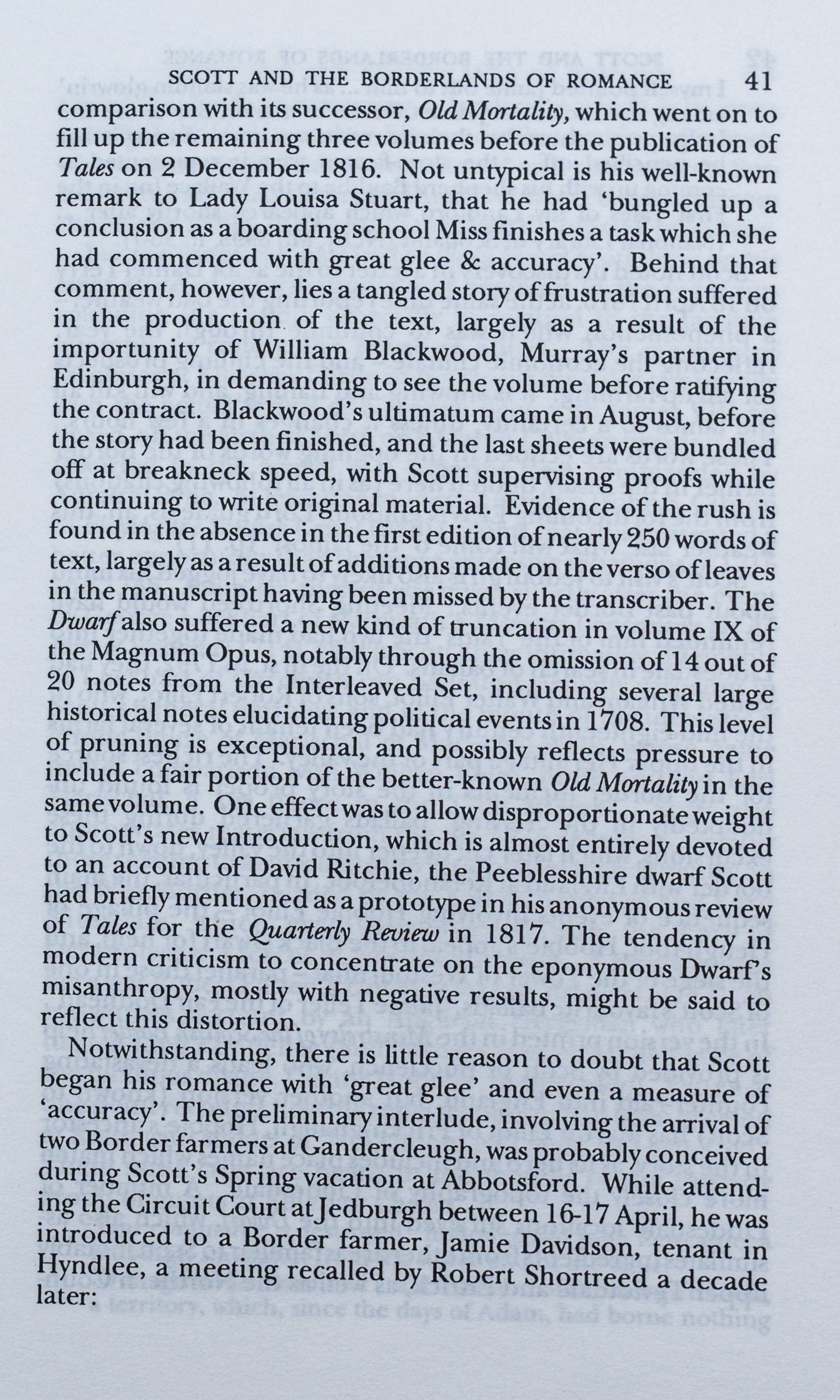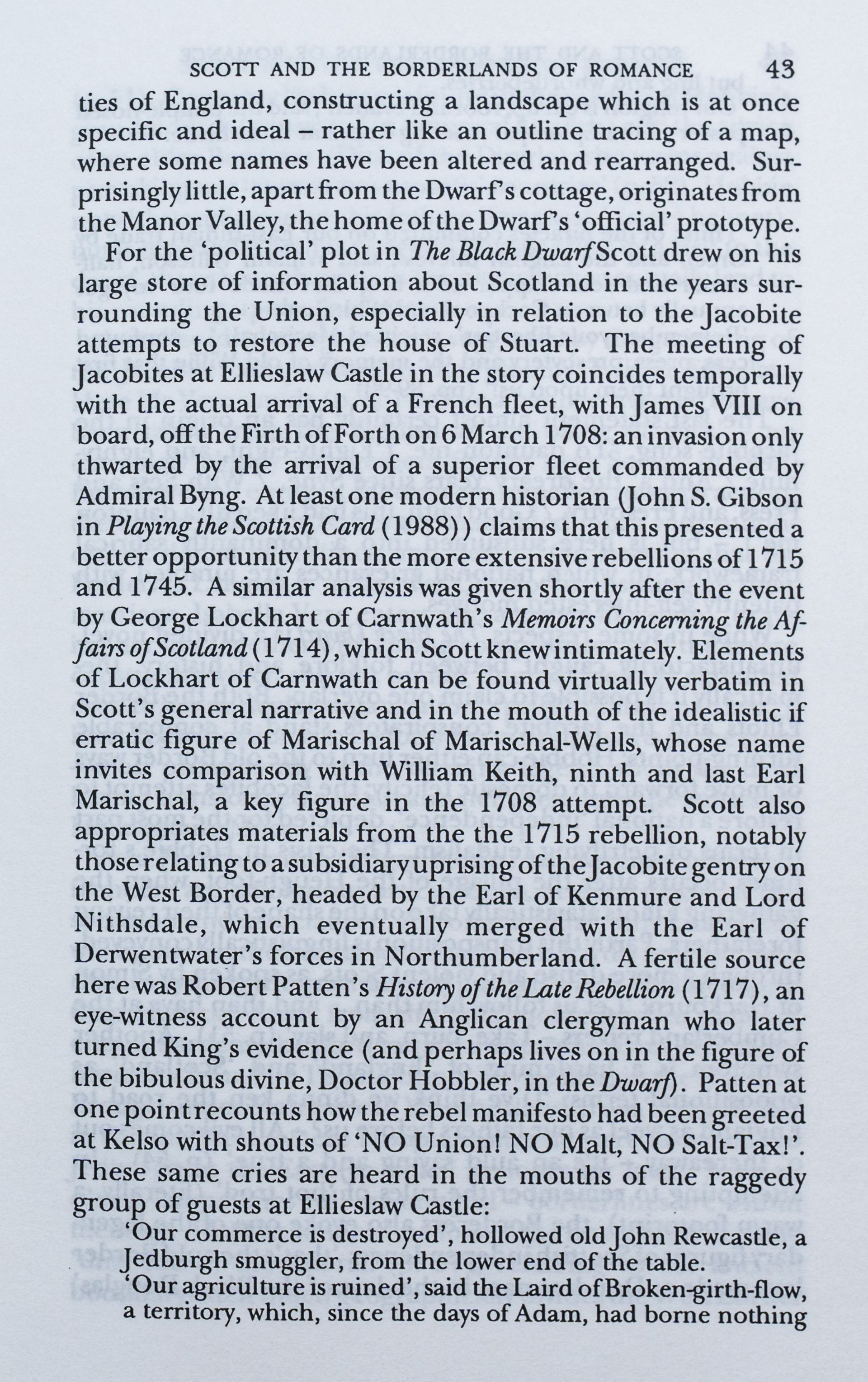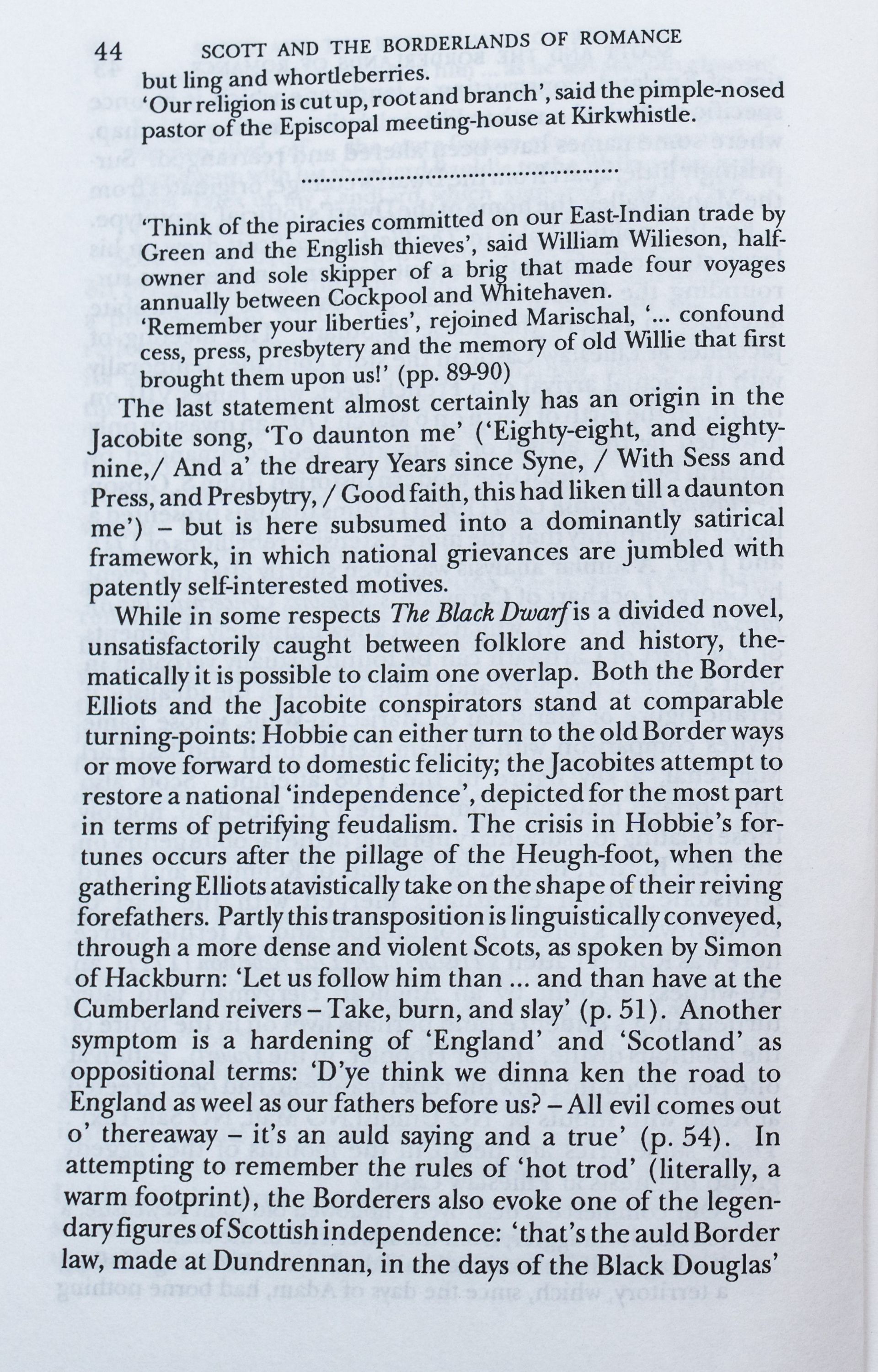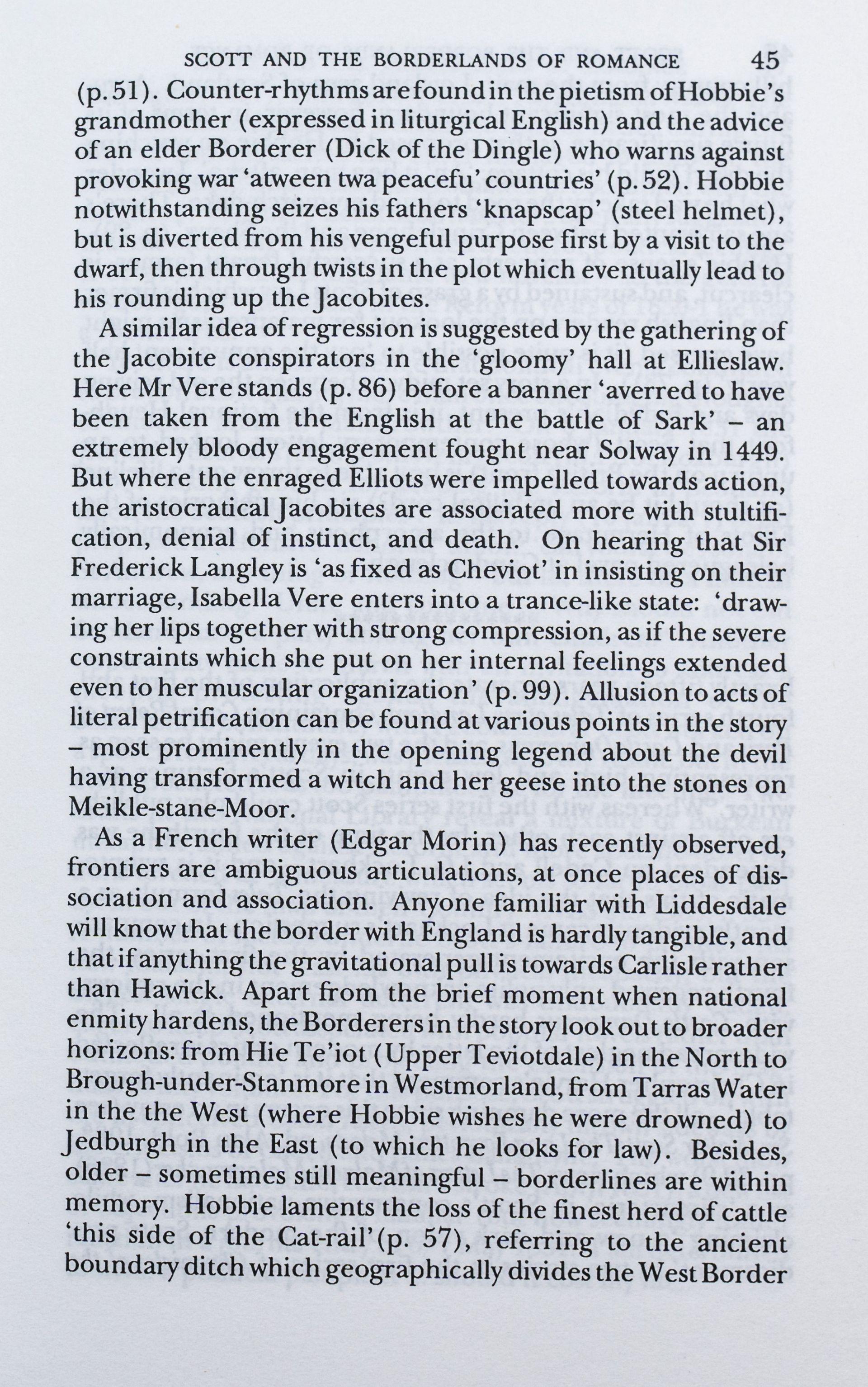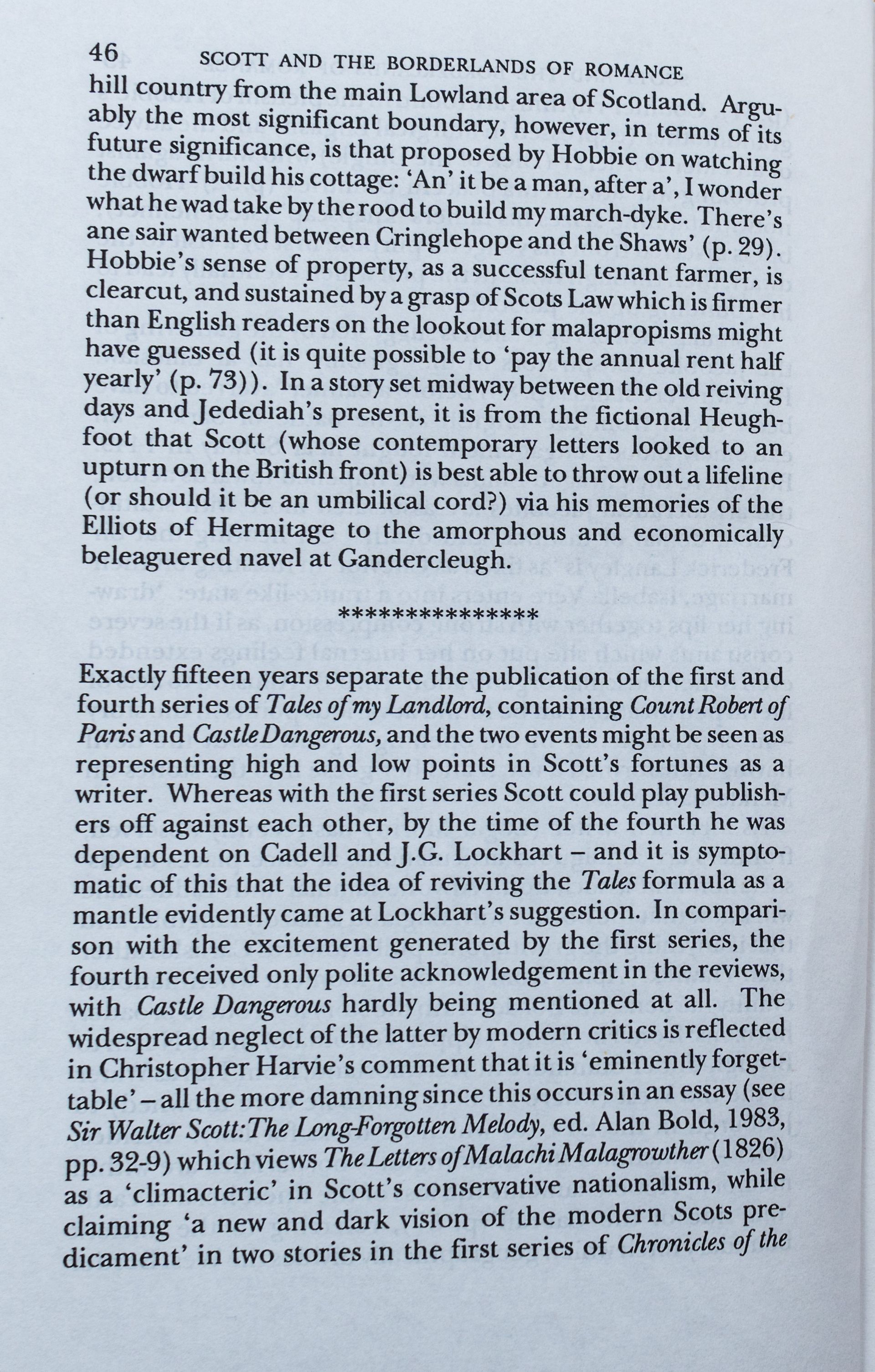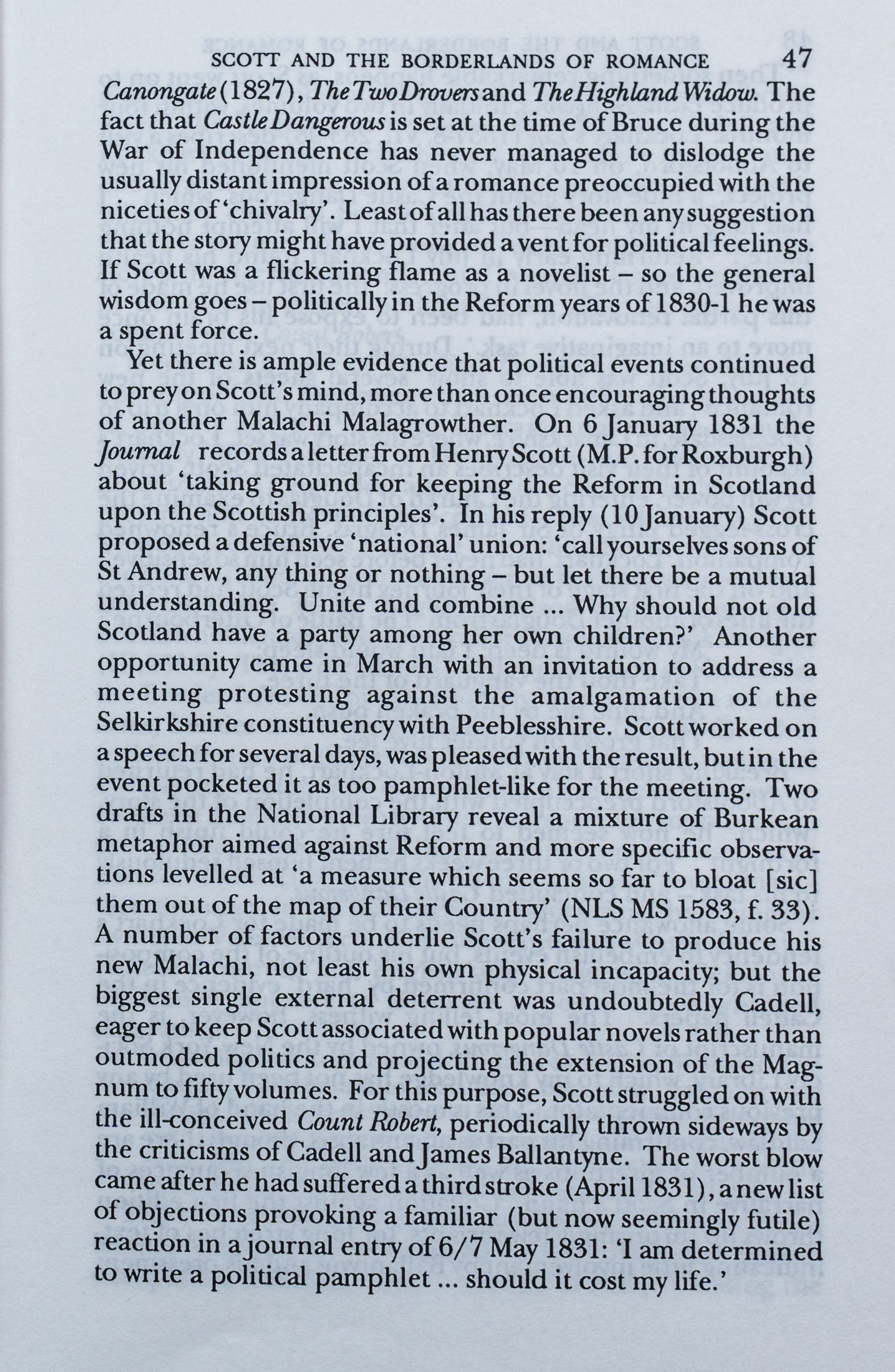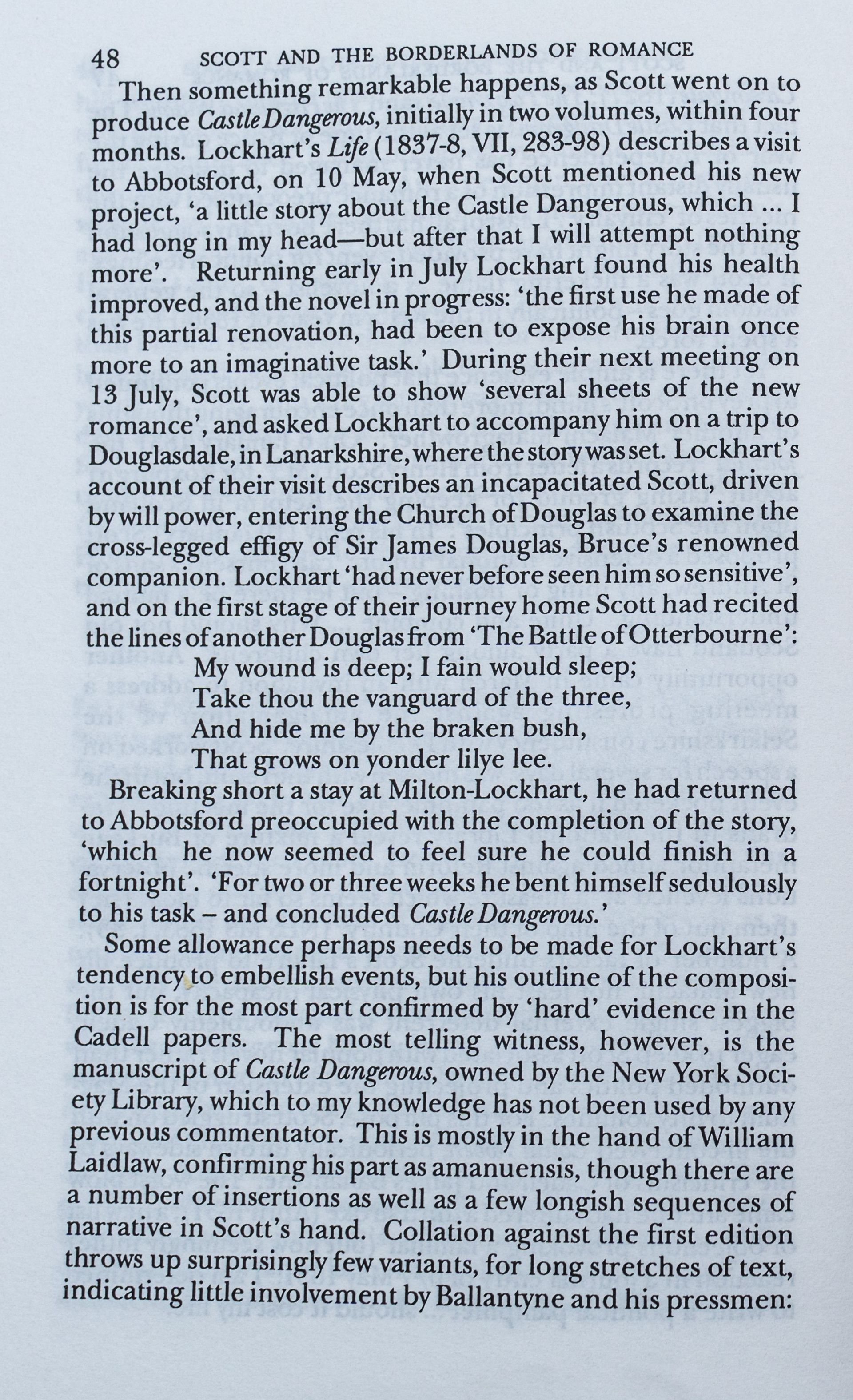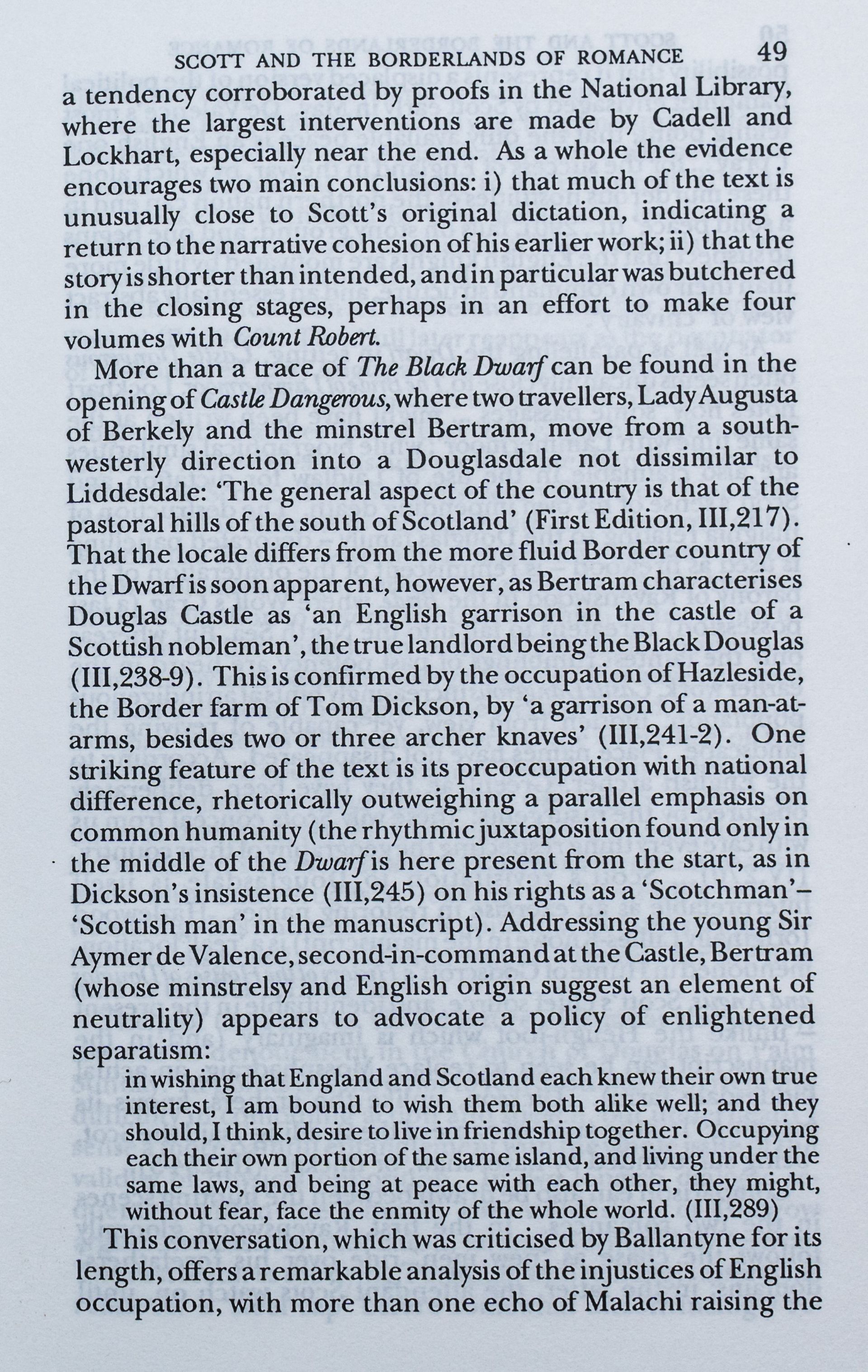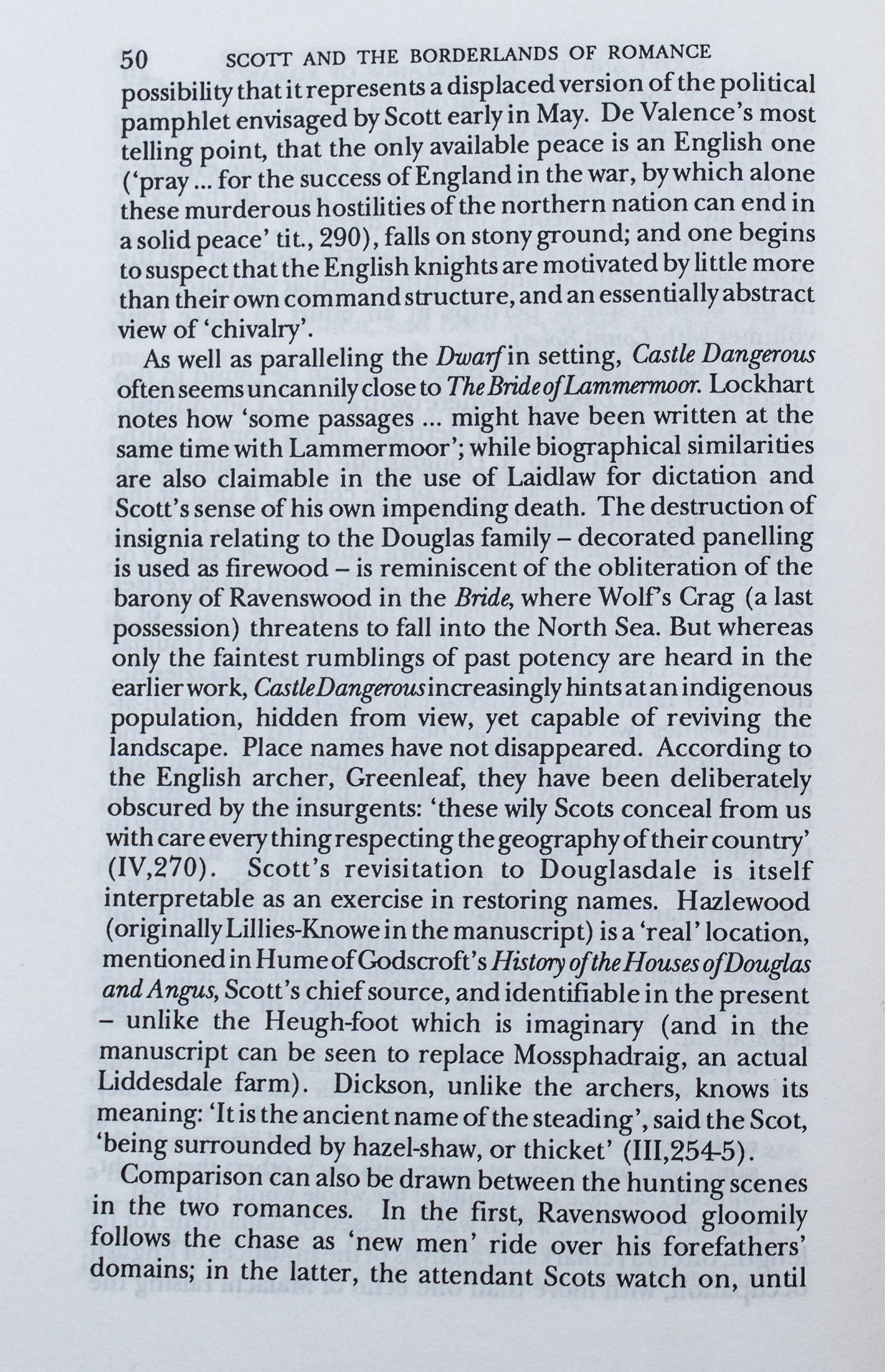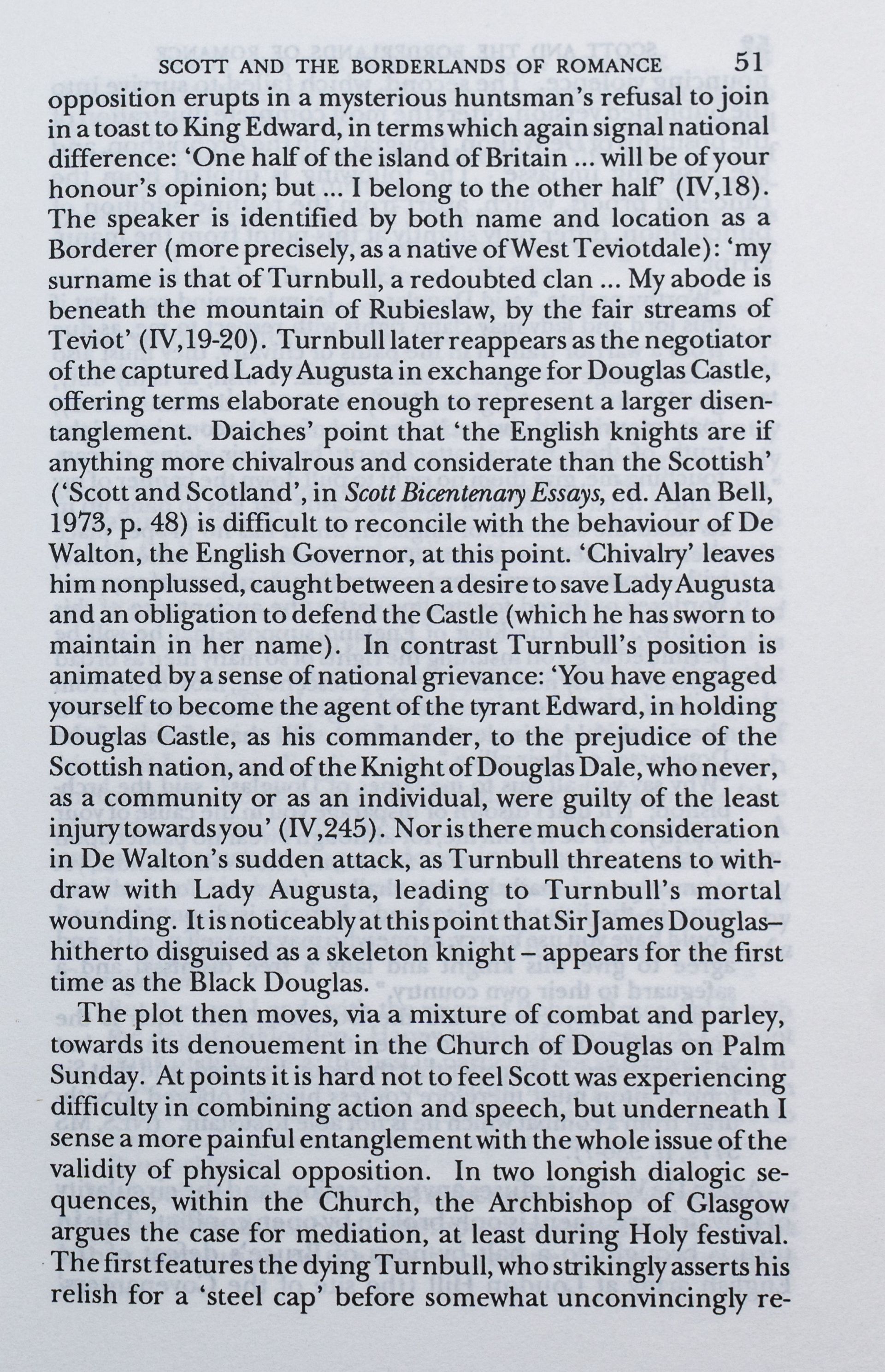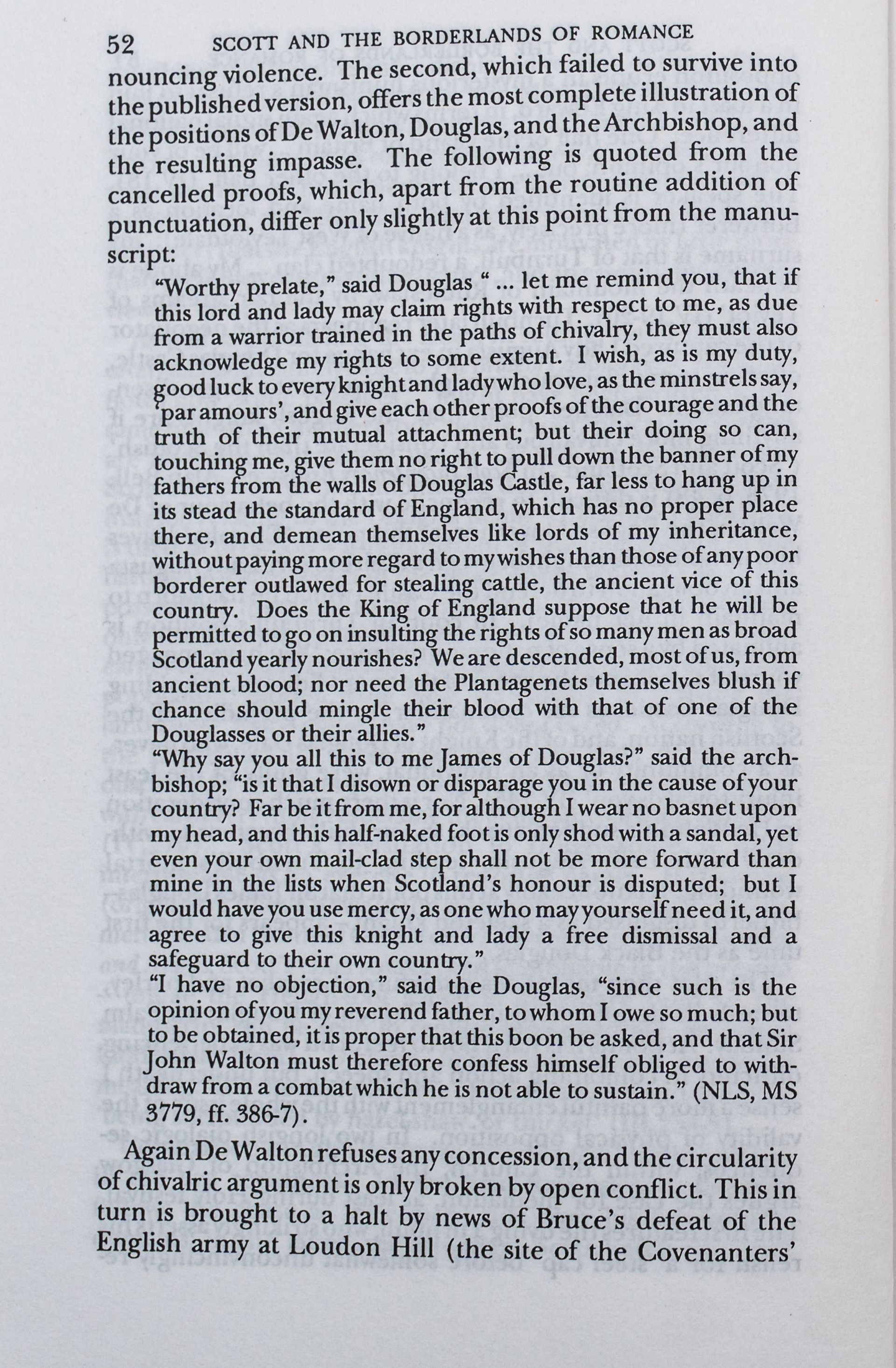Scott and the Borderlands of Romance
4th May 1992
Summary of the Talk:
Professor Peter Garside talk explores the intersection of history, romance, and place in Sir Walter Scott's novels, particularly focusing on his portrayal of the Borderlands of Scotland. Garside reflects on how Scott's fiction navigates historical events and political tensions, particularly the relationship between England and Scotland. He delves into the dual nature of Scott’s works—often balancing between the real historical world and the more fantastic, romanticized aspects of Scotland's past. The lecture takes into account the transformations in Scott’s writing, particularly how his later works shift from a clear historical narrative to more marginal, romanticized stories.
- Early Critical Views: Garside starts by recalling the initial critical perception of Scott, where he was often seen as a "poor artist" but nevertheless an important historical novelist. Garside's own early research into Scott focused on the "social progress" of Scotland through his works, seeing Scott’s novels as a progression from "rudeness to refinement."
- Evolution of Scott’s Political Views: Garside discusses how Scott's political and personal beliefs evolved over time, particularly his view of Scotland's place within the United Kingdom and the threat of Anglicization. He contrasts Scott’s earlier more optimistic stance with later disillusionment in post-Waterloo Britain.
- Shift in Narrative Style: Garside notes a shift in Scott’s writing from a progressive historical model to more complex and "marginal" situations. This evolution in style is seen in novels like The Bride of Lammermoor and Old Mortality, where Scott’s work becomes more politically charged and reflects the turbulence of his times.
- "Borderlands of Romance": Garside cites Francis Hart’s theory of Scott’s use of the "borderlands of romance"—places where history and myth collide. Scott often set his works in these "timeless" borderlands, blending historical events with romantic elements. Garside discusses how Scott used the romanticized version of history to express deeper historical truths.
- The Black Dwarf and Castle Dangerous: The lecture explores Scott’s The Black Dwarf and Castle Dangerous, noting that they straddle the line between history and folklore. Garside discusses how these works, while seemingly marginal or less celebrated, provide crucial insights into Scott's evolving views on history, Scotland’s future, and his personal and political struggles.
- Textual Analysis: The lecture delves into Scott's use of historical texts, exploring how later editions of his work, like the Magnum Opus, distorted or simplified his original texts to cater to a more moralistic and less historically complex audience. Garside also highlights Scott’s meticulous engagement with the historical and political realities of his time through his novels.
- Scott's Personal Struggles: The final sections touch on Scott's personal struggles, both physical (following his strokes) and creative. Despite these difficulties, Garside suggests that Scott’s final works, including Castle Dangerous, reflect a deliberate engagement with both Scottish history and national identity.
Interesting Points:
- Political Evolution: Garside's exploration of Scott's political trajectory—from moderate Whig to a more conservative stance—reveals a complex figure whose fiction often mirrored his personal frustrations with contemporary political realities.
- Historical vs. Romantic Tensions: The discussion of the borderlands of romance is fascinating because it highlights how Scott blurred the lines between historical facts and romantic imagination. These "borderlands" are not just geographical but also cultural and temporal, allowing Scott to explore Scotland’s tumultuous history in a way that was both emotionally resonant and politically charged.
- The Use of Scottish Borderland Settings: Garside notes Scott's recurring use of the Borderlands as settings for his stories, emphasizing how these areas, while physically contested, also represented cultural and national divides. The border is both a literal and symbolic site of conflict, reflection, and transformation in Scott's novels.
- Scott’s Last Works: Garside’s analysis of Castle Dangerous and its parallels to The Black Dwarf offers insights into how Scott's later works, though seemingly less celebrated, represent a culmination of his long engagement with Scottish history and national identity.
This lecture is a rich analysis of how Scott’s works continue to offer a complex, multifaceted exploration of history, culture, and identity, particularly in the context of Scotland’s relationship with England and the shifting tides of political and social thought.
Download the [Transcript] or Read the [Bulletin]


